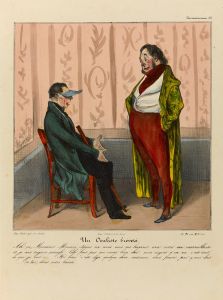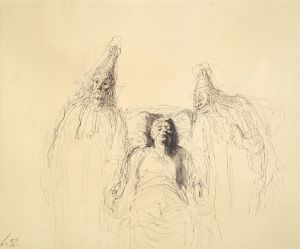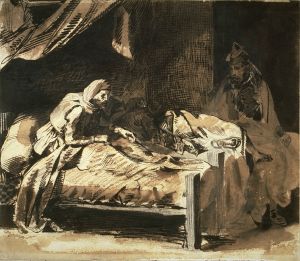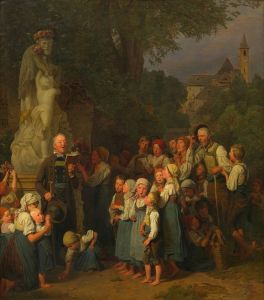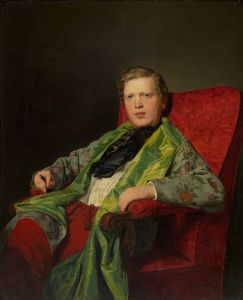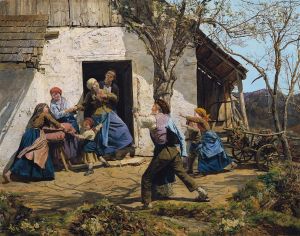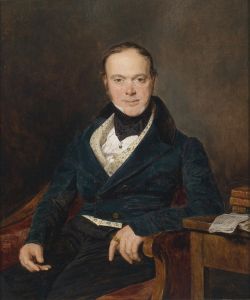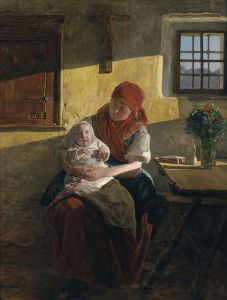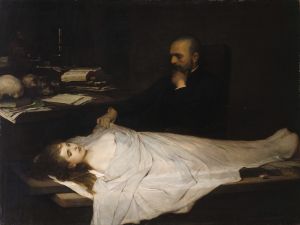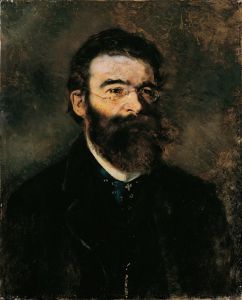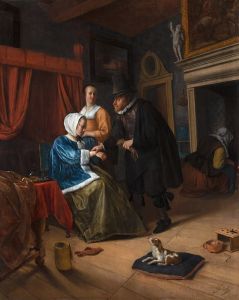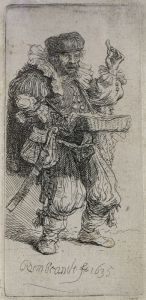
Apothekenladenschilder 3
A hand-painted replica of Ferdinand Georg Waldmüller’s masterpiece Apothekenladenschilder 3, meticulously crafted by professional artists to capture the true essence of the original. Each piece is created with museum-quality canvas and rare mineral pigments, carefully painted by experienced artists with delicate brushstrokes and rich, layered colors to perfectly recreate the texture of the original artwork. Unlike machine-printed reproductions, this hand-painted version brings the painting to life, infused with the artist’s emotions and skill in every stroke. Whether for personal collection or home decoration, it instantly elevates the artistic atmosphere of any space.
"Apothekenladenschilder 3" is a painting by the Austrian artist Ferdinand Georg Waldmüller. Waldmüller, born on January 15, 1793, in Vienna, was a prominent figure in the Biedermeier period, known for his detailed and realistic depictions of everyday life, landscapes, and portraits. He studied at the Academy of Fine Arts in Vienna and later became a professor there.
The painting "Apothekenladenschilder 3" is part of a series of works that Waldmüller created, which were intended as shop signs for pharmacies. These paintings were designed to be both functional and decorative, serving as advertisements for the establishments while also showcasing Waldmüller's artistic skill. The exact date of creation for "Apothekenladenschilder 3" is not well-documented, but it is believed to have been painted in the mid-19th century, during the height of Waldmüller's career.
In "Apothekenladenschilder 3," Waldmüller employs his characteristic attention to detail and vibrant use of color. The painting likely features imagery related to the pharmaceutical profession, such as medicinal plants, apothecary jars, or scenes of pharmacists at work. These elements would have been intended to attract customers and convey the reliability and expertise of the pharmacy.
Waldmüller's work is notable for its realism and the way he captures the textures and materials of the objects he depicts. His paintings often include a high level of detail, making them not only visually appealing but also informative about the subjects they portray. This attention to detail is evident in "Apothekenladenschilder 3," where the intricate depiction of objects and scenes would have made the painting an effective and attractive shop sign.
Throughout his career, Waldmüller faced both acclaim and criticism. He was praised for his technical skill and the lifelike quality of his paintings, but he also encountered resistance from some quarters of the art establishment, who were more inclined towards the Romantic style that was popular at the time. Despite this, Waldmüller's work remained influential, and he is now regarded as one of the leading artists of the Biedermeier period.
"Apothekenladenschilder 3" reflects Waldmüller's commitment to capturing the essence of everyday life and his ability to elevate ordinary subjects through his art. The painting is a testament to his skill as a painter and his ability to blend functionality with aesthetic appeal. Today, Waldmüller's works are held in high regard and can be found in various museums and collections, where they continue to be appreciated for their beauty and historical significance.
In summary, "Apothekenladenschilder 3" by Ferdinand Georg Waldmüller is a fine example of the artist's work, showcasing his detailed and realistic style. It serves as both a functional shop sign and a piece of art, reflecting the everyday life and professional practices of the time. Waldmüller's legacy as a leading figure of the Biedermeier period is well-established, and his paintings remain valued for their artistic and historical contributions.





